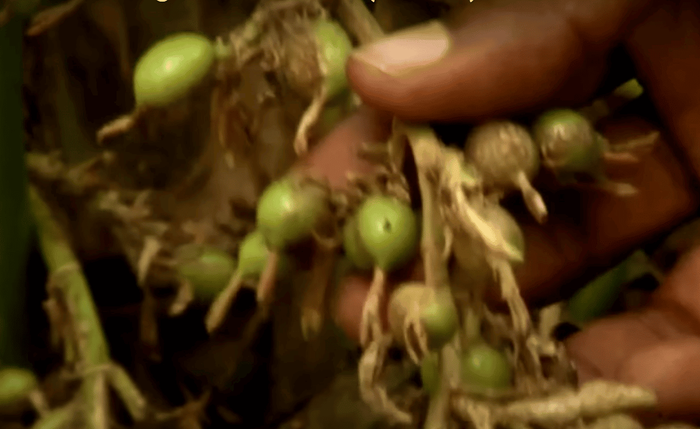Cardamom popularly known as queen of spices is native to the evergreen rain forest of south India. It is used for flavouring various preparations of food, confectionary & beverages.
It‘s grown in areas where the annual rainfall ranges from 1500-4000 mm, with a temperature range of 10-35 C and an altitude of 600-1200 m above sea level and good rainfall distribution. Big black soil with high humus content found in the forest region is best for cultivation. It also grows on laterite soil, clay loams and rich black soils having good drainage. Sandy soil is not suitable.
Propagation in nurseries
Cardamom is propagated through seeds and also through suckers each consisting of at least one old and one young aerial shoot. Seedlings are normally raised in primary and secondary nurseries. Dig the land at a depth of 30-45 cm with beds of 1m width, convenient length and 30 cm height.
Humus rich soil is spread over the beds. Seeds to be collected from well ripe capsules and planted immediately after extraction. Germination starts in about 30 days and continues for 1-2 months.
Land preparation and transplanting
Manuring at the rate of 90g Nitrogen, 60g Phosphorous & 120g Potassium per bed of 5 by 1 m in three equal split doses at an interval of 45 days as recommended to produce healthier seedlings.
Pits of 45 by 45 by 30 cm size are dug and filled with a mixture of top soil and compost or well decomposed farm yard manure. Planting is carried out during the rainy season. Cloudy days are ideal for planting. Seedlings are transplanted at a spacing of 20 by 20 cm and mulched immediately.
Irrigation and harvesting
75kg Nitrogen, 75 kg Phosphorous and 150g Potassium of fertilizer is recommended under irrigated condition. For high yielding plantation, yield 100kg per hectare. Fertiliser is applied in 2 split doses.
Irrigation should be done during summer. Cardamom normally starts bearing 2 years after planting. Picking is carried out at an interval of 15-25 days. After harvest, capsules are dried either in fields, electrical drier or the sun. They are sorted & stored in black polythene bags.



















